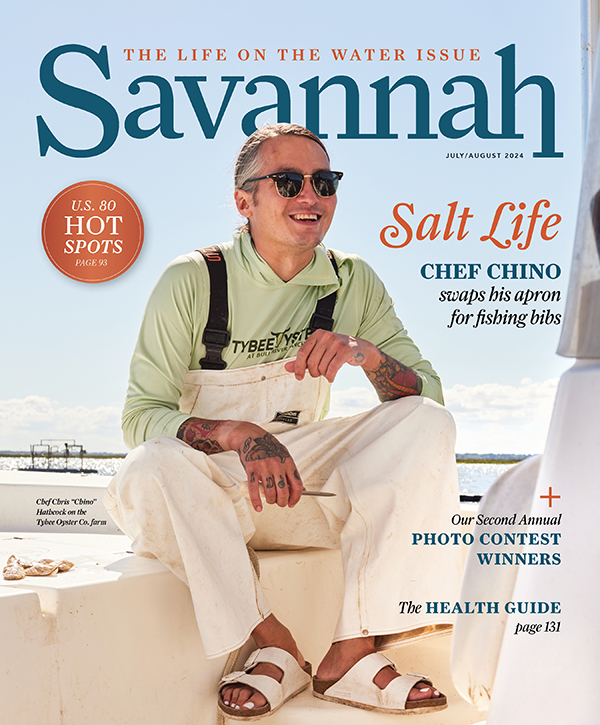Tybee Marine Science Center settles into a new home
After 30 years housed in a shoebox-sized former police station near the pier and pavilion, later this summer the Tybee Marine Science Center moves to the Fort Screven Historic District. From its new home nestled into sand dunes, the science center is a short trek from the beach — for guests and diamondback terrapins alike. According to Executive Director Maria Procopio, the resident population changes frequently based on a short-term stay catch-and-release program, but typically includes baby alligators, horseshoe crabs and sea jellies collected by trawling, seining, sand-sifting and beachcombing nearby. The only permanent science center habitants are a few turtles, dubbed “animal educators” by Procopio and her staff.

The 5,366-square-foot facility was designed by Craig Clements of Sottile & Sottile and built from sustainable materials, with input from Tybee residents. From the building’s hurricane-wind-load velocity sheathing to its turtle-safe exterior light bulbs, the science center has been planned with meticulous care — and the thoughtful touches extend past what meets the eye. Below the pedestrian paths, a permeable paver undercroft allows water to flow through cracks and absorb into the sand, reducing surface run-off, mitigating erosion and eliminating standing water. Overhead, a valley in the metal rooftop channels rainwater into a 1,785-gallon cistern, which is then filtered and salinated for the aquariums inside.
Clements describes the building’s interior as a white box space — akin to an art gallery — that allows flexibility for future exhibits. The windows of the main gallery are made of certified sea turtle safety glass, designed to block menacing color wavelengths that distract sea turtle mothers from nesting in the dunes and the hatchlings from making their way to the ocean (sea turtle nesting season is May 1 through Oct. 31). Throughout the space, observation decks made from South Carolina-grown black locust hardwood open to panoramic views of Daufuskie and Hilton Head islands across Calibogue Sound, where the Savannah River meets the Atlantic.
Now, as ever, the science center’s mission is to help cultivate coastal stewardship and connection through education and hands-on experience for visitors of all ages. Although the brand- new facility doesn’t open to the public until September, SeaCamp 2020: Coastal Kids Ocean Adventure programs will run for nine weeks in June and July. There, campers ages 6-11 will embark on marsh trips and beachcombing adventures, observing and collect- ing indigenous flora, fauna and sea creatures — snails, spider crabs, sea pansies, puffers, flounders and polka-dot batfish, to name a few.
After a long spring of distance-learning due to COVID-19, these exploratory treks and outdoor classrooms provide an especially welcome summertime experience filled with lessons every coastal kid should learn.
Tybee Island Marine Science Center
37 Meddin Drive, Tybee Island, GA 31328 912-786-5917
SeaCamp sessions run June 1–July 31, daily and weekly sessions available. Tybee Island Marine Science Center opens to the public September 2020.

